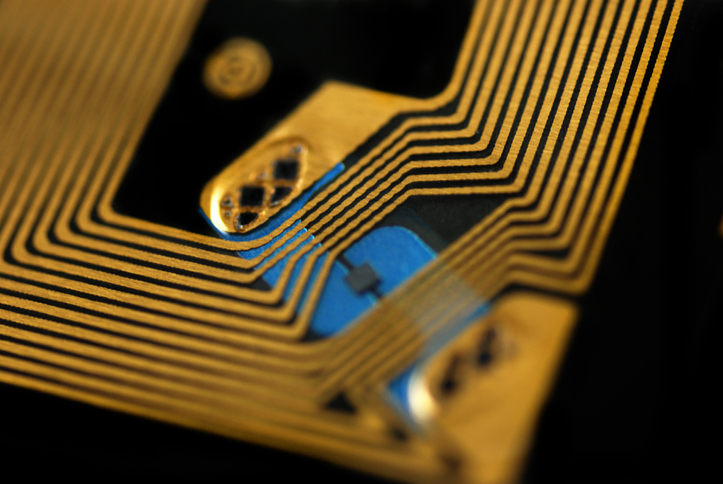
What do retail and pharmacy have in common? How RFID technology can serve as part of a comprehensive solution to diversion – MedCity News

Retail and pharmacy – two very different industries that, on the surface, might not appear to have much in common. However, the two fields have found a use for an emerging technology to solve very similar problems. Radio frequency identification (RFID) technology is an incredibly valuable resource that has been introduced in the retail space to track inventory and detect and deter theft. Now, RFID is bringing immense value to the healthcare space,continuing to show promise and results, especially when incorporated into a comprehensive drug diversion prevention program.
RFID technology uses wireless communication and radio waves to identify and track items and equipment. RFID tags can store a significant amount of data, whether it be a single serial number or several pages of material. With mobile RFID readers and RFID-enabled scanners, managing inventory can be optimized and simplified. In retail, RFID-driven, digital-first models have been used to improve item tracking, integrate inventory management, track consumer demand with no time lags, and manage stock efficiently and remotely. Retailers like Walmart have cited an increase in operational efficiency as well as cost savings in stores where RFID is fully operational. Walmart has successfully used RFID technology for effective inventory management, reducing bullwhip effect from supply chain disruptions and reducing excess inventory across operations, further launching retail into a future of accurate monitoring and detection, and improving outcomes overall. So how can this technology be adapted to improve pharmacy management and patient safety?
Applying RFID in healthcare
Healthcare systems need to adapt and incorporate technological advances in the same way retail organizations have to maintain compliance, reduce inventory shortages, and identify and prevent drug diversion. The greatest RFID opportunities lie in patient safety, compliance and drug inventory management. When these concepts are leveraged in a comprehensive diversion program, RFID can enhance medication tracking through its entire journey, ensuring control, accuracy, and accountability. RFID tracking data can also be valuable for drug monitoring when integrated with diversion analytics programs, adding another dimension to surveillance software, further minimizing opportunities for diversion.
Diversion prevention and identification should be a top priority for healthcare facilities and treated with the same urgency as other risks to patient safety. Building a suitable program to meet a facility’s distinct needs has proven to be quite challenging. Leveraging technology and automation, like RFID tracking, can provide significant support in monitoring diversion across the whole chain of custody. Diversion program fundamentals and emerging technologies should work in tandem to not only stop but prevent diversion in hospitals and health systems.
Implementing a diversion prevention program
Diversion prevention can be bolstered through several tactics, including having a passionate and knowledgeable champion to make sure hospital processes or guidelines are being followed. It is important to build the framework for a successful diversion prevention program that leverages industry best practices and incorporates integrated software solutions. A diversion prevention program is established to protect patients, staff, health systems, and the public from diversions harmful effects. Vetting employees thoroughly and educating staff across all departments in hospitals and health systems on what diversion looks like, how to identify it, and and how to report can help identify an issue or increase self-reporting so employees can receive the help they need. Additionally, policies and procedures must be created with an understanding of all regulatory and compliance requirements as outlined by both state and federal governing bodies. Drug Diversion is a real and constant threat, with many risk points throughout the chain of custody, that requires interdisciplinary and leadership collaboration and support.
Technology and automated solutions support hospitals and health system diversion programs in surveillance, control, and auditing of controlled substances. Emerging technology and tools, like RFID tracking, can be used to strengthen a hospital’s approach to monitoring by simplifying and optimizing auditing, wasting, and medication tracking throughout the hospital. RFID tracking can not only make inventory management easier on staff, but it can also make medication delivery and movement more transparent, helping rule out or identify cases of diversion in later investigations. With technology, surveillance programs can incorporate machine learning and tracking to enhance controlled substance accountability in depths unachievable through a manual process. Technology can also help identify situations where poor practice or diversion are occurring, both of which are detrimental to hospital care and patient safety.
Understanding the tools and technology being used throughout the medication pathway, including how RFID supports drug diversion monitoring and prevention, is important now more than ever. Technology should be incorporated into existing systems to facilitate and optimize a diversion prevention program that has been built on a strong foundation of policy and procedure. As the healthcare industry becomes more knowledgeable and aware of the comprehensive needs of diversion oversight, it is apparent that technology is a crucial component to patient safety and diversion prevention. RFID is just one example of how examining parallels between different industries can create new opportunities to adapt technology and solve problems. Our eyes must remain open to solutions in markets everywhere that are leveraging technology to problem solve. Where do we look next?